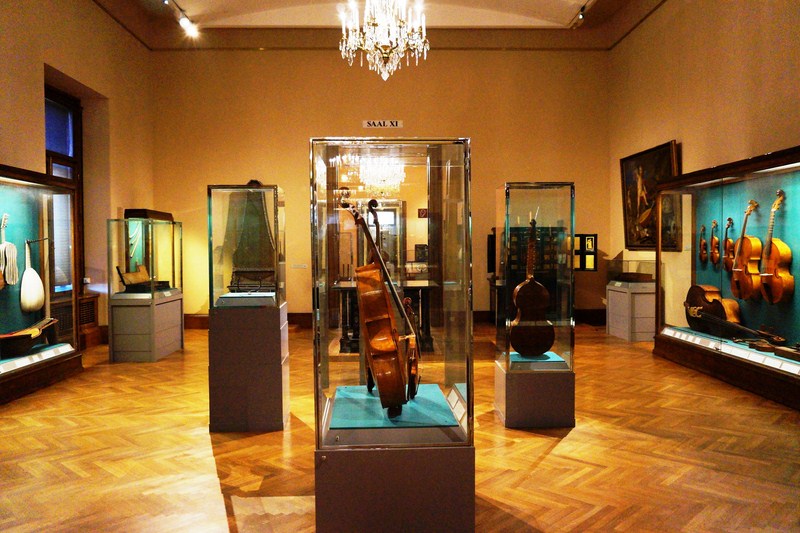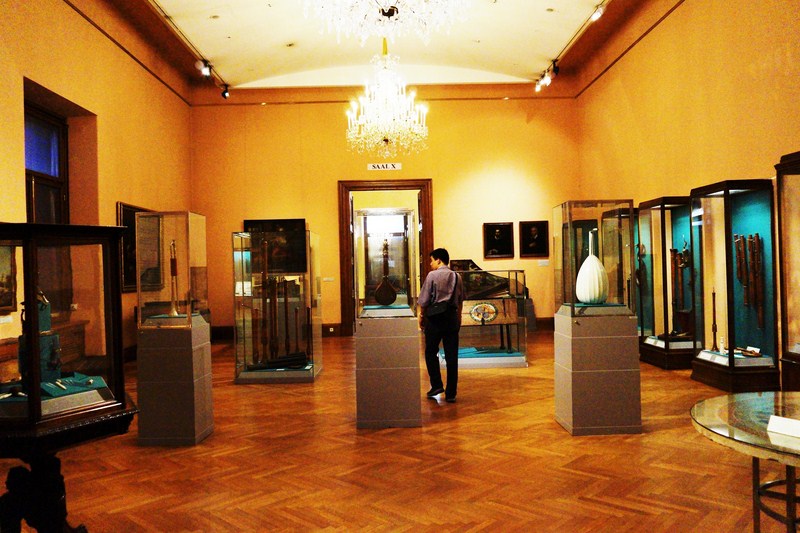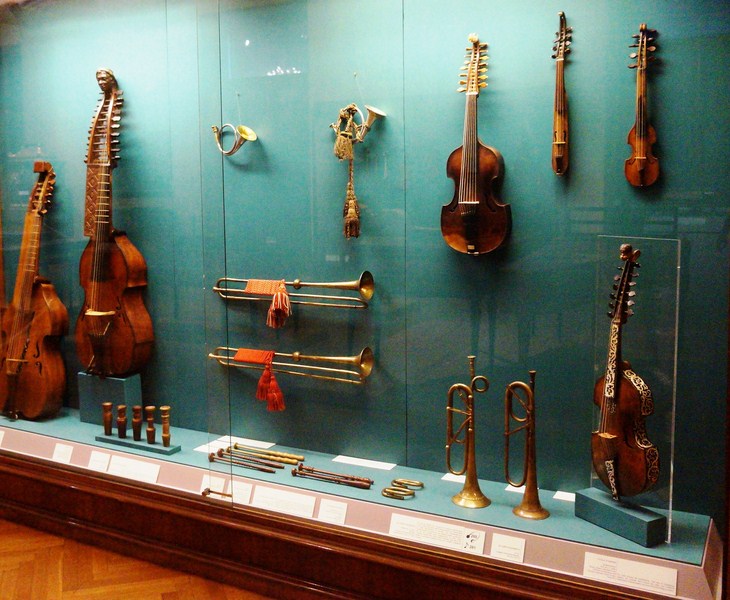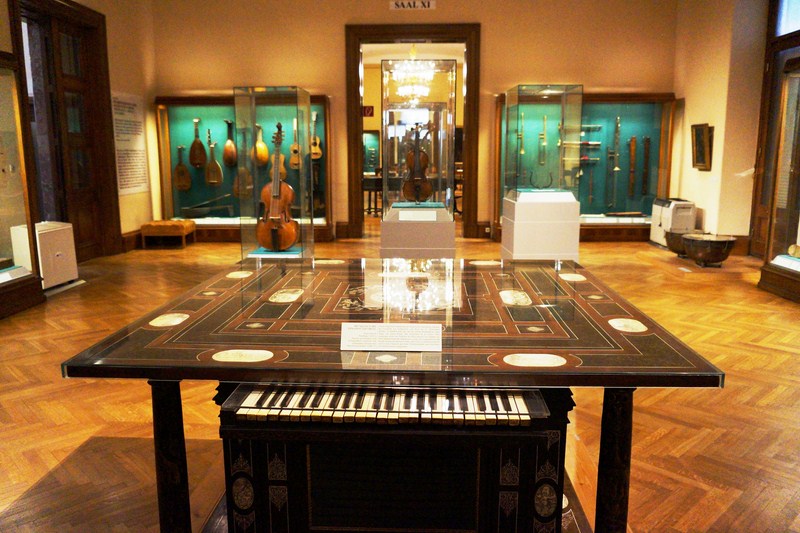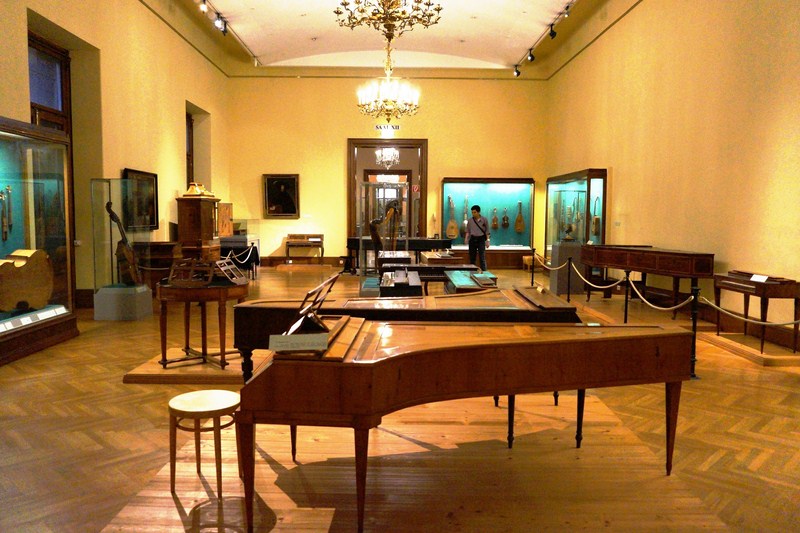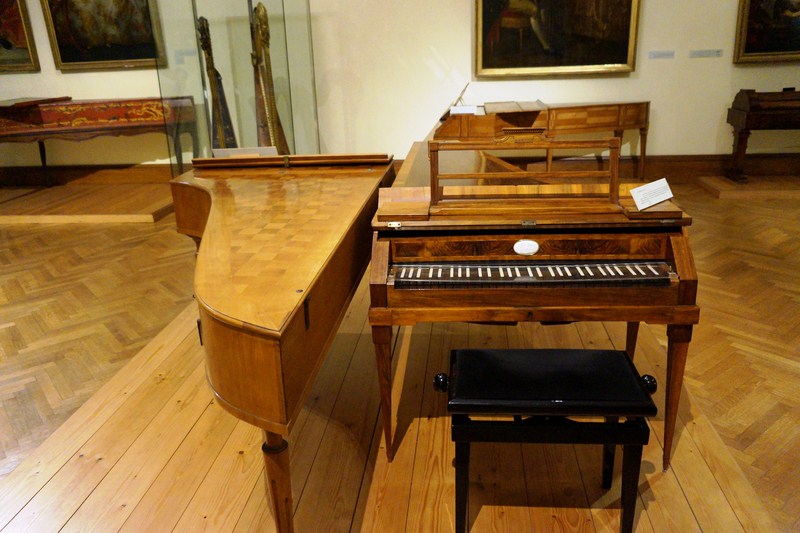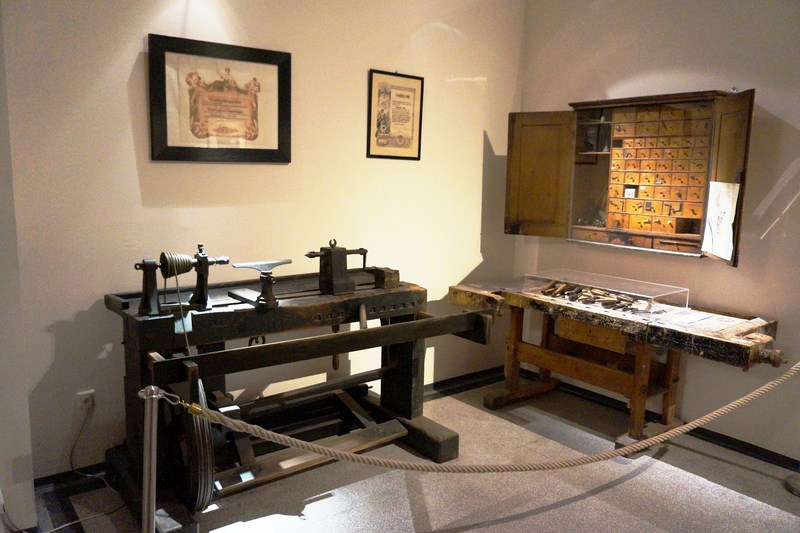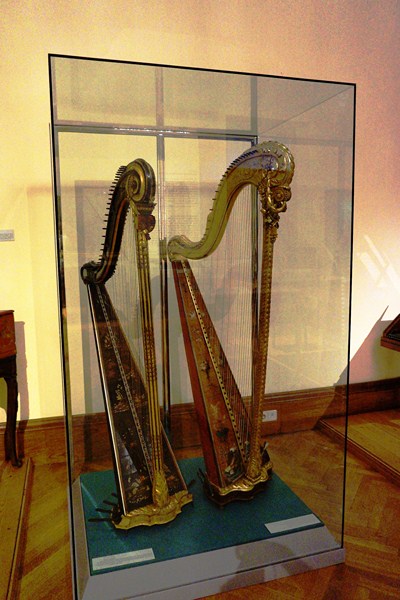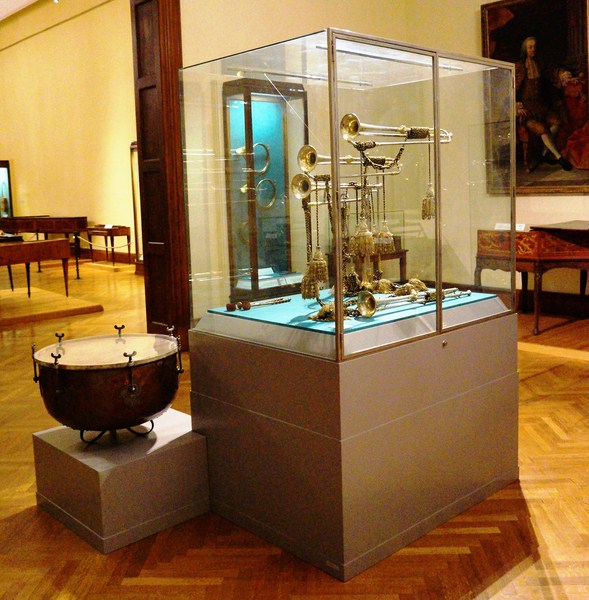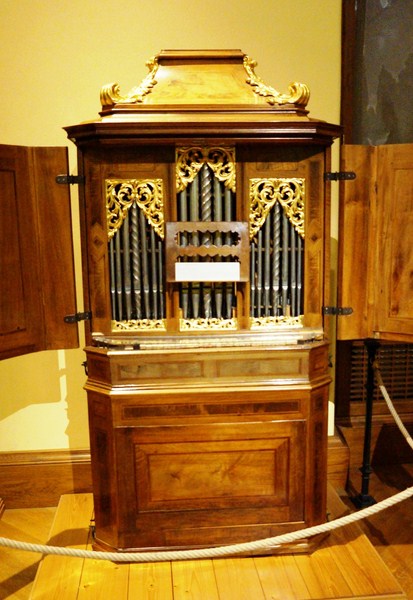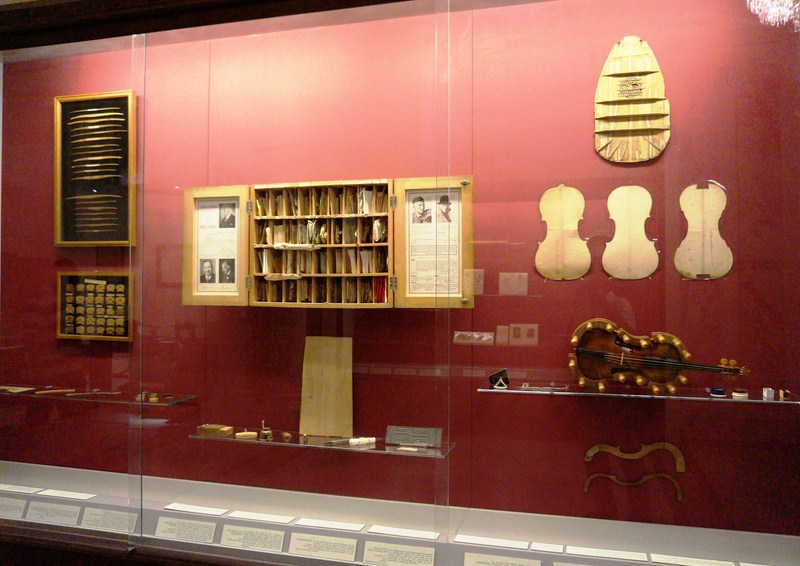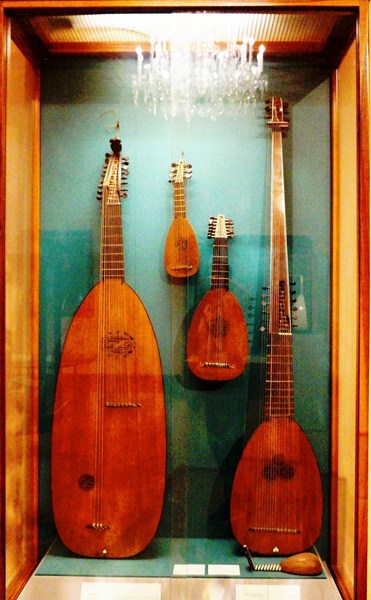The Collection of Historic Musical Instruments (Sammlung Alter Musikinstrumente), located in the wing of the Austrian National Library that also houses the Ephesos Museum’s collection of antiques and the Collection of Arms and Armor, is home to one of the world’s most important, most comprehensive and also among the most valuable historical collections of late Italian Renaissance and early Baroque instruments. The collection includes a particularly comprehensive range of clavichords and Viennese fortepianos. It was interesting to see such old forerunners of our current instruments such as the coronet, oboe, piano, organ, and woodwinds.
Check out “Neue Burg“
The majority of the holdings of the collection have their origins in Habsburg holdings. The art and music-loving Tyrolean sovereign Archduke Ferdinand II’s love of preciosities started the collection. Among the richest and most valuable collections of the late Renaissance, it was part of an art chamber that was housed in the Ambras Castle in Tyrol. When the situation became dangerous due to the Napoleonic Wars, the collection was transferred from Innsbruck to Vienna in 1806.
The second core group in the collection consists of instruments of the Obizzi family dating back to the late Renaissance and the early Baroque period. Family-related events were responsible for the transfer of the Obizzi Collection to Vienna in 1870.
In the spring of 1947, the collection was presented in one room of the Neue Burg. Further rooms were set up an, after several years, a full range of instruments was finally on display. This process was completed in 1964. The collection has since been continually expanded via purchases, gifts and loans and, in the period since the 1980s, the collection has been expanded by a further 400 items.
Today, each of its 12 rooms are dedicated either to an era of music history or to a musical personality. The chronological approach to music history allows the presentation both of ensembles of related instruments, from the most diverse instrumental families, and of typical forms of music making.
A gallery is dedicated to Joseph Haydn and his days. Some of the harpsichords were played by Mozart and Beethoven. There’s also a set of 16th century shawms that are shaped like dragons; an elaborately decorated clavicytherium; a violin made from the shells of a tortoise and owned by Empress Maria Theresa; a glass harmonica invented by Benjamin Franklin; and a crystal flute.
Particularly noteworthy are the 4-stringed instruments by Jakob Stainer and Giovanni Battista Grancino, donated in 2003/04 by Dr. Herbert and Evelyn Axelrod. The violins by Stainer, although not approaching the mastery of Antonio Stradivari or Giuseppe Guarneri del Gesu, are famous or their snail carvings (mostly the scrolls), evidence of the craftsmanship of the 17th century.
The museum maintains and presents numerous instruments that were played by famous musicians and composers. Among them is the violin played by Leopold Mozart (the father and pedagogue of Wolfgang Amadeus Mozart), on display by itself in a glass case, making it look like a shrine that bears the magic of genius. The grand fortepiano that was once in the possession of Clara and Robert Schumann, was later owned by Johannes Brahms.
You can also see the zither on which Anton Karas played the haunting theme-song from the 1949 British film “The Third Man.” Audio guides, produced in 2001 in several languages, takes visitors through the display collection, explaining organological details, affording insights into Austrian musical history and offering numerous listening examples related to the historical instruments on display.
Visitors can also play on reproductions of original instruments. The Matinees of the Collection of Historic Musical Instruments give visitors the opportunity to both see and hear the instruments, insofar as their condition allows them to be played. Several of the keyboard instruments were clearly labelled as playable by visitors.
The Collection of Historic Musical Instruments made us look back on a tradition that spans over four centuries. Truly the world of sound in which the composers of Viennese Classicism lived can be heard and understood here in a nearly complete fashion.
Collection of Historic Musical Instruments: Neue Burg, Heldenplatz, 1010 Vienna. Opening hours: Wednesdays – Sundays, 10 AM – 6 PM. Admission till half an hour before closing time. Tel: +43 1 525 24 4602. Website: www.khm.at. E-mail: info.sam@khm.at.

